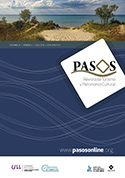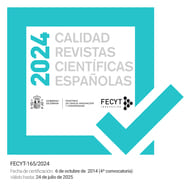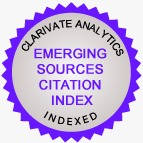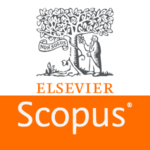Sentidos de lugar a partir da experiência de lazer e turismo em áreas protegidas de vida selvagem: uma meta-síntese
DOI:
https://doi.org/10.25145/j.pasos.2018.16.050Palavras-chave:
Sensação de lugar, lazer, , natureza, lugares especiais, benefícios, relações sociais.Resumo
O presente artigo oferece os resultados de uma meta-síntese da literatura especializada sobre o sentido do lugar atribuído por turistas e residentes a áreas protegidas de vida selvagem, com o objetivo de comparar se essas visões coincidem independentemente do contexto social e ambiental. Foi realizada uma revisão e interpretação da literatura existente sobre o tema para compreender a construção social do sentido de lugar. As construções de (1) relações sociais, (2) natureza, (3) experiências em áreas protegidas de vida selvagem, (4) benefícios, e (5) identidade individual, familiar e comunitária foram identificadas como categorias gerais influenciando o sentido do lugar tanto para visitantes como para residentes de áreas protegidas de vida selvagem. Este conhecimento é básico na concepção e desenvolvimento de experiências que fortalecem os laços dos turistas com o ambiente natural.
Downloads
##plugins.generic.pfl.publicationFactsTitle##
##plugins.generic.pfl.reviewerProfiles## Indisp.
##plugins.generic.pfl.authorStatements##
##plugins.generic.pfl.indexedIn##
-
##plugins.generic.pfl.indexedList##
- ##plugins.generic.pfl.academicSociety##
- PASOS. Revista de Turismo y Patrimonio Cultural
- ##plugins.generic.pfl.publisher##
- Instituto Universitario de Investigación Social y Turismo. Universidad de La Laguna (España) - Instituto Universitario da Maia ISMAI (Portugal)
Referências
Aho, S. K. 2001. Towards a general theory of touristic experiences: Modelling experience process in tourism. Tourism Review, 56, issue(3/4), 33–37. http://doi.org/10.1108/eb058368
Altman, I., & Low, S. M. 1992. “Place Attachment: A Conceptual Inquiry. In Place Attachment” Springer, USA, pp. 1–12. http:// doi.org/10.1007/978‑1‑4684‑8753‑4
Amsden, B. L., Stedman, R. C., Kruger, L. E., Anderson, D. H., Fulton, D. C., & Theodori, G.L. 2013. “The Meanings Associated with Varying Degrees of Attachment to a Natural Landscape”. Leisure Sciences, 28(1), 155–163. http://doi.org/10.1016/j.jtrangeo.2012.12.001
Bondas, T., & Hall, E. O. C. 2007. Challenges in Approaching Metasynthesis Research. Qualitative Healtf Research, 113–121. http:// doi.org/10.1177/1049732306295879
Booth, A., Papaioannou, D., & Sutton, A. 2012. The literature review: its role within research. Systematic Approaches to a Successful Literature Review (SAGE, 2012). http://doi.org/http://dx.doi.org/10.1108/17506200710779521
Budruk, M., & Stanis, S. A. W. 2013. Place attachment and recreation experience preference: A further exploration of the relationship. Journal of Outdoor Recreation and Tourism, 1–2, 51–61. http://doi.org/10.1016/j.jort.2013.04.001
Campelo, A., Aitken, R., Thyne, M., & Gnoth, J. 2013. Sense of Place: The Importance for Destination Branding. Journal of Travel Research, 53(2), 154–166. http://doi.org/10.1177/0047287513496474
Chia‑Chin, L., & Lockwood, M. 2014. Forms and sources of place attachment: Evidence from two protected areas. Geoforum, 53, 74–81. Retrieved from file:///C:/Users/Andres Ried/Downloads/1‑s2.0‑S0016718514000505‑main. pdf
Cordell, H. K., Bergstrorn, J. C., Hartmann, L. A., & English, D. B. K. 1989. An Analysis of the Outdoor Recreation and Wilderness Situation in the United States: USDA Forest Service W. A. Assessment.
Cuñat, R. 2007. Aplicación De La Teoría Fundamentada ( Grounded Theory ) Al Estudio Del Proceso De Creación De Empresas. Decisiones Globales, 1–13.
Csikszentmihalyi, M. 1990. Fluir: una psicología de la felicidad. (Kairós, Ed.), Psicología. Barcelona.
Davenport, M., & Anderson, D. 2005. Getting From Sense of Place to Place‑Based Management: An Interpretive Investigation of Place Meanings and Perceptions of Landscape Change. Society & Natural Resources, 18(7), 625–641. http:// doi.org/10.1080/08941920590959613
Driver, B., Brown, P., & Peterson, G. 1991. Benefits of leisure. Venture Publishing. Retrieved from http://psycnet.apa.org/psycinfo/1992‑97201‑000
Eisenhauer, B., Krannich, R., & Blahna, D. 2000. Attachments to Special Places on Public Lands: An Analysis of Activities, Reason for Attachments, and Community Connections. Society & Natural Resources, 13(5), 421–441. http://doi. org/10.1080/089419200403848
Esteban‑Guitart, M., Monreal‑Bosch, P., & Vila, I. 2013. Qualitative study on transnational attachment among eight families of foreign origin. Psyecology, 4(3), 1–22.
Glaser, B. G., & Strauss, A. L. 1967. The Discovery of Grounded Theory: Strategies for Qualitative Research. Observations (Vol. 1). http://doi.org/10.2307/2575405
Gunderson, K., & Watson, A. 2007. Understanding Place Meanings on the Bitterroot National Forest, Montana. Society & Natural Resources, 20(April), 705–721. http://doi.org/10.1080/08941920701420154
Heintzman, P. 2010. Nature‑Based Recreation and Spirituality: A Complex Relationship Definition of Spirituality. Leisure Sciences, 32, 72–89. http://doi.org/10.1080/01490400903430897
Henderson, K. A. 2006. Dimensions of Choice: Qualitative Approaches to Parks, Recreation, Tourism, Sport, and Leisure Research (Second). Palo Alto: Venture.
Hernandez, B., Hidalgo, C., & Ruiz, C. 2014. Theoretical and Methodological Aspects of Research on Place Attachment. In L. Manzo C. & P. Devine‑Wright (Eds.), Place Attachment: advances in theory, methods and applications (pp. 125–137). Routledge.
Hom Cary, S. 2004. The tourist moment. Annals of Tourism Research, 31(1), 61–77. http://doi.org/10.1016/j.annals. 2003.03.001
Jorgensen, B. S., & Stedman, R. C. 2006. A comparative analysis of predictors of sense of place dimensions: Attachment to, dependence on, and identification with lakeshore properties. Journal of Environmental Management, 79(3), 316–327. http://doi.org/10.1016/j.jenvman.2005.08.003
Kaplan, R., & Kaplan, S. 1989. The Experience of Nature: A Psychological Perspective. Cambridge University Press. Cambdrige University Press.
Kianicka, S., Buchecker, M., Hunziker, M., & Müller‑Böker, U. 2006. Locals’ and Tourists’ Sense of Place. Mountain Research and Development, 26(1), 55–63. http:// doi.org/10.1659/0276‑4741( 2006)026[0055:LATSOP]2.0.CO;2
Kyle, G., & Chick, G. 2007. The Social Construction of a Sense of Place. Leisure Sciences, 29(3), 209–225. http://doi. org/10.1080/01490400701257922
Lojo, A. 2016. Turismo Chino emisor: estado de la cuestión y agenda. Boletín de La Asociación de Geógrafos Españoles, 72, 72–2016. http://doi.org/10.21138/bage.2348
Maas, J., Van Dillen, S. M. E., Verheij, R. A., & Groenewegen, P. P. 2009. Social contacts as a possible mechanism behind the relation between green space and health. Health & Place, 15, 586–595. http://doi.org/10.1016/j.healthplace.2008.09.006
Manning, R. E. 2010. Studies in Outdoor Recreation. Studies in Outdoor Recreation. Oregon State University Press.
Manzo, L., & Devine‑Wright, P. 2014. Place Attachment: advances in theory, methods and applications. Abingdon: Routledge.
Millennium Ecosystem Assessment. 2005. Ecosystems and Human Well‑being: Biodiversity Synthesis. Ecosystems (Vol. 86). http://doi.org/1 0.1088/1755‑1307/ 6/3/432007
Patterson, M., & Williams, D. 2002. Collecting and analyzing qualitative data: Hermeneutic principles, methods, and case examples. Champaign, IL: Sagamore, 1–129. Retrieved from http://www.treesearch.fs.fed.us/pubs/29421
Relph, E. 1976. Place and Placelessness. University of Toronto.
Ried, A. 2012. La experiencia de ocio al aire libre en contacto con la naturaleza: significados y vínculos con los lugares y la naturaleza. Bilbao: Universidad de Deusto.
Ried, A. 2015a. La experiencia de ocio al aire libre en contacto con la naturaleza, como vivencia restauradora de la relación ser humano‑naturaleza. Polis.
Ried, A. 2015b. La experiencia de ocio en la naturaleza como fundamento de la construcción de sentido del lugar: el caso del Parque Natural de Urkiola, Bizkaia, Euskadi, España. Revista de Geografía Norte Grande, 60, 215–237. Retrieved from http://revistanortegrande.cl/wp‑content/ uploads/2015/06/11‑RIED_ N_60.pdf
Roggenbuck, J. W., & Driver, B. L. 2000. Benefits of nonfacilitated uses of wilderness. Scientist, 3(324), 33–49.
Sandelowski, M., & Barroso, J. 2003. Qualitative Data Analysis : Proposal Stage Qualitative Data Analysis. Qualitative Health Research.
Schroeder, H. W. 1996. Ecology of the heart: Understanding how people experience natural environments. Natural Resource Management: The Human Dimension. Retrieved from http://www.ncrs.fs.fed.us/pubs/book/ nc_1996_Schroeder_001.pdf
Schroeder, H. W. 2002. Experiencing nature in special places: surveys in the North‑Central region. Journal of Forestry, 100(5), 8–14.
Seamon, D., & Sowers, J. 2008. Place and Placelessness, Edward Relph. Key Texts in Human Geography, (Seamon 2000), 43–51. http://doi.org/10.2307/213523
Stokowski, P. A. 2002. Languages of place and discourses of power : Constructing new senses of place. Journal of Leisure Research, 34, 368–382.
Tarrant, M., Smith, E., & Cordell, K. 1999. Recreation visitor preferences for and perceptions of outdoor recreation setting attributes. In H. K. Cordell, C. J. Betz, & J. M. Bowker (Eds.), Outdoor recreation in American life: a national assessment of demand and supply trends (pp. 412–431). Sagamore Publishing.
Tuan, Y. 1974. Topofilia (1a). New York: Columbia University Press.
Williams, D. R., Patterson, M. E., Roggenbuck, J. W., & Watson, A. E. 1992. Beyond the commodity metaphor: Examining emotional and symbolic attachment to place. Leisure Sciences. http://doi.org/10.1080/01490409209513155
Wynveen, C. J., Kyle, G. T., Absher, J., & Theodori, G. L. 2011. The Meanings Associated with Varying Degrees of Attachment to a Natural Landscape. Journal of Leisure Research, 43(2), 290–311.
Wynveen, C. J., Kyle, G. T., & Sutton, S. G. 2010. Place Meanings Ascribed to Marine Settings: The Case of the Great Barrier Reef Marine Park. Leisure Sciences, 32(3), 270–287. http://doi.org/10.1080/01490401003712705
Young, M. 1999. The Social Construction of Tourist Places. Australian Geographer, 30(3), 373–389. http://doi. org/10.1080/00049189993648
Downloads
Publicado
Como Citar
Edição
Seção
Licença
Confirmo que o trabalho é original (de minha/nossa autoria), e que não será submetido a outras revistas ou publicações até a resolução final do processo de revisão em PASOS, RTPC.
Autorizo a publicação do meu trabalho por PASOS, PSTN de acesso livre e aberto em qualquer dos formatos que considere oportuno, por tempo indeterminado e como colaboração não remunerada.
Da mesma forma, o(s) autor(es) entende(m) que o trabalho publicado pode ser vinculado ou depositado em qualquer servidor ou incluído em outras publicações (republicação), desde que o novo local e/ou a nova edição façam referência à publicação original e reconheçam a autoria e propriedade de direitos autorais das publicações PASOS RTPC.
Os autores entendem que uma verificação de plágio autoplágio será realizada, e o artigo poderá ser removido a qualquer momento do fluxo editorial.










